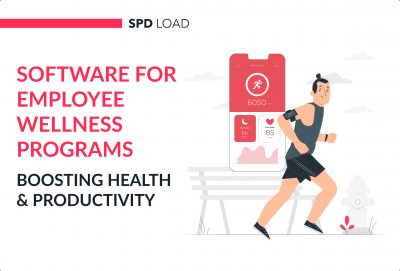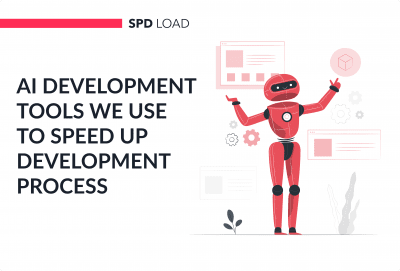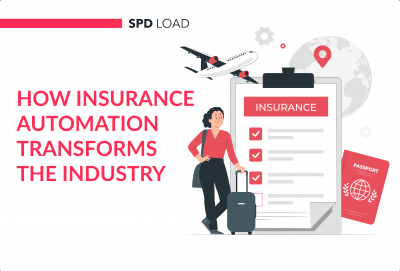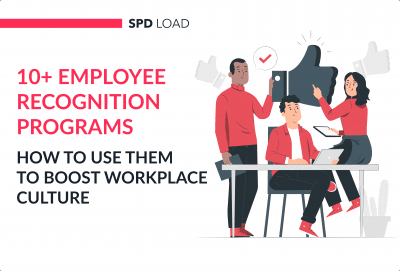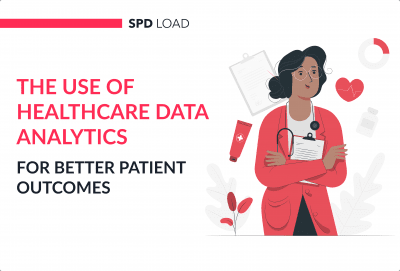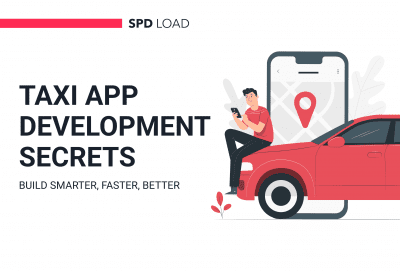IT Terminology Glossary: 217 Terms You Should Know
- Updated: Nov 12, 2024
- 26 min
The field of information technology (IT) can be overwhelming for those who are new to it due to the abundance of acronyms, technical jargon, and specialized vocabulary.
This glossary of over 210 essential IT terms uses easy-to-understand definitions and practical examples, making it easy to understand and apply.
Whether you need a quick reference or are new to IT, you can communicate effectively with IT professionals and stakeholders and navigate technical discussions confidently.
Transform your ideas into reality with custom software tailored just for your business – contact us today!
A
- Accessibility: The design and creation of digital products or services that are usable by people with various disabilities.
- Address: A unique identifier, often numerical, used to locate devices or resources on a network or the Internet.
- API (Application Programming Interface): A set of definitions and protocols for building and integrating application software, enabling communication between different software applications.
- Agile Development: A set of principles for software development under which requirements and solutions evolve through the collaborative effort of self-organizing cross-functional teams.
- Alias: An alternative name or nickname used to refer to a user, file, website, or other digital entities.
- Anti-Spam: Techniques and tools used to prevent unwanted or unsolicited emails (spam) from reaching users’ inboxes.
- Attachment: A file sent along with an email message. To improve your email marketing game, check out these 7 easy and effective email template strategies to generate more leads.
- Authentication: The process of verifying the identity of a user or device, typically through passwords, biometrics, or other means.
- Artificial Intelligence (AI): The simulation of human intelligence processes by machines, especially computer systems, including learning, reasoning, and self-correction.
- Application: A PC or mobile program designed to perform various tasks or functions for end-users.
B
- Bandwidth: The maximum rate of data transfer across a given path or connection in a network.
- Bit: The basic unit of information in computing and digital communications, representing a state of 0 or 1.
- Blog: A regularly updated website or web page, typically run by an individual or small group, that is written in an informal or conversational style.
- Bluetooth: A wireless technology standard for exchanging data over short distances from fixed and mobile devices.
- Bookmark: A saved shortcut that directs your browser to a specific webpage.
- Broadband Connection: A high-speed internet connection that is always on and faster than traditional dial-up access.
- BYOD (Bring Your Own Device): A policy that allows employees to use their personal devices for work purposes.
- Binary Code: The most basic form of computer code, consisting of ones (1) and zeros (0), which computers use to perform tasks.
- Blockchain: A system of recording information in a way that makes it difficult or impossible to change, hack, or cheat the system. A blockchain is essentially a digital ledger of transactions duplicated and distributed across the entire network of computer systems on the blockchain.
- BI (Business Intelligence): Comprises strategies and technologies enterprises use for data analysis of business information, providing historical, current, and predictive views of business operations.
- Backup: The process of creating and storing copies of data that can be used to protect organizations against data loss. Recovery from a backup typically involves restoring the data to the original location or to an alternate location where it can be used in place of the lost or damaged data.
- Browser: A software application used to access and navigate the Internet, rendering web pages and allowing users to interact with web content.
C
- Cable Modem: A modem that connects to the Internet via the same coaxial cable that transmits cable television.
- Captcha: A challenge-response test used in computing to determine whether the user is human.
- CD-ROM (Compact Disc Read-Only Memory): A type of optical disc that can store large amounts of data, but the data cannot be modified or deleted.
- Chat: Real-time text communication between users over the Internet.
- Cloud: A metaphor for the Internet based on how it is depicted in network diagrams. Cloud-based app development enables businesses to provide reliable, fast service to their customers.
- Cloud Computing: The delivery of different services through the Internet, including data storage, servers, databases, networking, and software.
- Compress: To reduce the size of a file or data to save space or transmission time.
- Connect: To join or link together electronic devices or networks.
- Cookie: Small pieces of data sent from a website and stored on a user’s computer by the user’s web browser while the user is browsing.
- CPU (Central Processing Unit): The primary component of a computer that performs most of the processing inside a computer.
- CSS (Cascading Style Sheets): A style sheet language used for describing the presentation of a document written in HTML or XML.
- Cursor: A moving position indicator displayed on a computer monitor that shows where the next character will be displayed.
- Cloud Computing: The on-demand availability of computer system resources, especially data storage and computing power, without direct active management by the user, often referred to simply as “the cloud.”
- Cybersecurity: The practice of protecting systems, networks, and programs from digital attacks aimed at accessing, changing, or destroying sensitive information, extorting money from users, or interrupting normal business processes.
- Containerization: The use of containers to encapsulate an application and its dependencies into a single object, which can then be run in any environment, improving reliability and scalability.
- CRM (Customer Relationship Management): A technology for managing all your company’s relationships and interactions with customers and potential customers to improve business relationships. Explore how CRM in recruiting can transform your hiring process and improve candidate relationships.
- Cache: A hardware or software component that stores data so that future requests for that data can be served faster; the data stored in a cache might be the result of an earlier computation or a copy of data stored elsewhere.
- Compiler: A special program that processes statements written in a particular programming language and turns them into machine language or “code” that a computer’s processor uses.
- Concurrency: The ability of different parts or units of a program, algorithm, or problem to be executed out-of-order or in partial order without affecting the final outcome. This allows for parallel execution of the concurrent units, which can significantly improve the overall speed of the execution in multi-processor and multi-core systems.
D
- Daemon: A background process that handles requests for services such as email, printing, and file transfers.
- Database: A structured set of data held in a computer, especially one that is accessible in various ways.
- Data Center: A facility used to house computer systems and associated components, such as telecommunications and storage systems.
- Decompress: To restore compressed data to its original size and format.
- Defragmentation: The process of consolidating fragmented data on a disk drive to improve speed and efficiency.
- Desktop: The primary user interface of a computer, where files, windows, and applications can be accessed and managed.
- DHCP (Dynamic Host Configuration Protocol): A network management protocol used on IP networks whereby a DHCP server dynamically assigns an IP address and other network configuration parameters to each device on a network.
- Dial-Up Connection: An internet connection is established using a modem and a telephone line.
- Distance Education: A way of learning remotely without being in regular face-to-face contact with a teacher in the classroom. Ready to enter the education tech field? Feel free to discover EdTech startup ideas that can change how people learn and grow.
- Domain: An area of the Internet with a unique name that represents one or more IP addresses.
- Drag and Drop: A pointing device gesture in which the user selects a virtual object by “grabbing” it and dragging it to a different location or onto another virtual object.
- DVD (Digital Versatile Disc or Digital Video Disc): An optical disc storage format capable of storing large amounts of data, including high-definition video.
- Decryption: The process of converting encrypted data back into its original form so it can be understood.
- Data Mining: The process of discovering patterns, correlations, and anomalies within large data sets to predict outcomes using various techniques, from statistics to machine learning and database management.
- DevOps: An approach to culture, automation, and platform design intended to deliver increased business value and responsiveness through rapid service delivery. If you want to learn more about DevOps specialists, check out our DevOps glossary that covers key terms to help you stay on top of DevOps practices and tools.
- DNS (Domain Name System): The hierarchical and decentralized naming system used to identify computers, services, and other resources connected to the Internet or a private network, translating human-readable domain names to machine-readable IP addresses.
- Data Encryption: The method of converting plain text into a coded form (cipher text) to prevent unauthorized access, a critical aspect of cybersecurity and data protection.
- Distributed Systems: Systems in which components located on networked computers communicate and coordinate their actions by passing messages, enabling high levels of computation to be achieved more economically.
- Deep Learning: A subset of machine learning based on artificial neural networks with representation learning, allowing computational models composed of multiple processing layers to learn representations of data with multiple levels of abstraction.
- Docker: An open platform for developing, shipping, and running applications, allowing you to separate your applications from your infrastructure so you can deliver software quickly through containers.
- Digital Signature: A mathematical technique used to validate the authenticity and integrity of a message, software, or digital document, akin to a handwritten signature or stamped seal, but much more secure.
E
- Email: Electronic mail, a method of exchanging messages between people using electronic devices.
- Emoticon: A textual expression representing the face of a person’s mood or facial expression.
- Ethernet: A family of computer networking technologies commonly used in local area networks (LAN), metropolitan area networks (MAN), and wide area networks (WAN).
- End User: The person who uses a product or service after it has been fully developed and marketed.
- E-Commerce: The buying and selling of goods and services using the Internet, electronic systems, and networks, including related online processes such as marketing, delivery, payment, and customer service. Want to join the booming eCommerce market? Learn how to develop an eCommerce app that meets customer needs.
- ERP (Enterprise Resource Planning): Integrated management software that allows organizations to manage and automate many back office functions related to technology, services, and human resources, streamlining processes and information across the organization. Learn more about ERP software development.
- Encryption: The process of converting information or data into a code, especially to prevent unauthorized access, a critical component of secure communication.
- Expert System: An AI program that emulates the decision-making ability of a human expert, using knowledge and inference rules to solve problems that usually require human expertise (learn more about AI terms in our AI glossary).
- Event-Driven Programming: A programming paradigm in which the flow of the program is determined by events such as user actions (mouse clicks, key presses), sensor outputs, or message passing from other programs.
F
- Flash Drive: A small, portable flash memory card that plugs into a computer’s USB port and functions as a portable hard drive.
- Freeware: Software that is available for use at no cost.
- Firewall: A network security device that monitors and filters incoming and outgoing network traffic based on an organization’s previously established security policies, acting as a barrier between a trusted and an untrusted network.
- Firmware: A specific class of computer software that provides low-level control for a device’s specific hardware, which can be embedded in flash ROMs or hardware memory.
- Front-End: In software architecture, the front-end is the part of a software system that interacts with the users, typically consisting of user interface components and user experience considerations.
- FTP (File Transfer Protocol): A standard network protocol used to transfer computer files between a client and server on a computer network.
- Function as a Service (FaaS): A cloud computing service that allows developers to execute code in response to events without the complexity of building and maintaining the infrastructure typically associated with developing and launching an app.
- Full Stack Development: Refers to the development of both front-end (client-side) and back-end (server-side) portions of web applications, encompassing a broad set of skills in web development.
- Fault Tolerance: The property that enables a system to continue operating properly in the event of the failure of some of its components, crucial for maintaining high availability and reliability.
G
- Generative AI: Artificial intelligence that can generate new content, such as text, images, or music, that is similar to but not identical to original content.
- GPS (Global Positioning System): A satellite-based navigation system that allows any user with a GPS receiver to determine their exact location anywhere in the world.
- Grayware: Unwanted software or software that behaves in an annoying or undesirable manner.
- Git: A distributed version control system tracking source code changes during software development. It’s designed for coordinating work among programmers, but it can be used to track changes in any set of files.
- GUI (Graphical User Interface): A user interface that allows users to interact with electronic devices through graphical icons and visual indicators, as opposed to text-based interfaces, typed command labels, or text navigation.
- Gateway: In networking, a gateway is a hardware device that acts as a “gate” between two networks, potentially with different protocols and architectures, to ensure data properly flows between them.
- GPU (Graphics Processing Unit): A specialized electronic circuit designed to rapidly manipulate and alter memory to accelerate the creation of images in a frame buffer intended for output to a display device. GPUs are increasingly used in AI and machine learning to handle parallel tasks efficiently.
- GraphQL: A query language for APIs and a runtime for executing those queries by using a type system you define for your data. It provides a more efficient and powerful alternative to REST.
H
- Home Page: The website’s main page, typically serving as an introduction page and gateway to the rest of the site.
- HTML (Hypertext Markup Language): The standard markup language for documents designed to be displayed in a web browser.
- Hyperlink: A reference to data that the reader can directly follow by clicking or hovering or some other gesture.
- Help Desk: A service providing information and support to computer users, especially within a company.
- HTTP (Hypertext Transfer Protocol): The foundation of data communication for the World Wide Web, where hypertext documents include hyperlinks to other resources that the user can easily access.
- HTML (Hypertext Markup Language): The standard markup language for documents designed to be displayed in a web browser. It can be assisted by technologies such as Cascading Style Sheets (CSS) and scripting languages such as JavaScript.
- Hashing: The transformation of a string of characters into a usually shorter fixed-length value or key that represents the original string, used in data retrieval and storage optimizations.
- Hybrid Cloud: A cloud computing environment that uses a mix of on-premises, private cloud, and third-party, public cloud services with orchestration between the two platforms, allowing for more flexible and optimized deployment models.
- Hypervisor: Also known as a virtual machine monitor (VMM), it is software, firmware, or hardware that creates and runs virtual machines. A computer on which a hypervisor runs one or more virtual machines is called a host machine.
- HCI (Human-Computer Interaction): The study and practice of designing, implementing, and evaluating interactive computing systems for human use, focusing on the interfaces between people and computers.
- High Availability: Refers to systems that are durable and likely to operate continuously without failure for a long time. The term implies that parts of a system have been fully tested and, in many cases, that there are accommodations for failure in the form of redundant components.
I
- IoT (Internet of Things): The network of physical objects (“things”) that are embedded with sensors, software, and other technologies for the purpose of connecting and exchanging data with other devices and systems over the Internet.
- IP Address (Internet Protocol Address): A numerical label assigned to each device connected to a computer network that uses the Internet Protocol for communication. An IP address serves two principal functions: host or network interface identification and location addressing.
- ISP (Internet Service Provider): A company that provides individuals and other companies access to the Internet and other related services such as website building and virtual hosting.
- IDE (Integrated Development Environment): A software application that provides comprehensive facilities to computer programmers for software development, typically including a source code editor, build automation tools and a debugger.
- Intranet: A private network accessible only to an organization’s staff, often used to securely share company information and computing resources among employees.
- Information Security: The practice of protecting information by mitigating information risks. It is part of information risk management and involves protecting information from unauthorized access, disclosure, disruption, modification, or destruction.
- Infrastructure as a Service (IaaS): A form of cloud computing that provides virtualized computing resources over the Internet, offering a fully outsourced service, and can be used by enterprises to run virtual machines or store data.
- Immutable Data: Data that cannot be changed after being created is an essential concept in functional programming and is also valued for its benefits in certain database and distributed systems designs.
From concept to creation – launch your marketplace with SPDLoad!
J
- JavaScript: A high-level, interpreted programming language that conforms to the ECMAScript specification. JavaScript is widely used for building interactive and dynamic web pages.
- JSON (JavaScript Object Notation): A lightweight data-interchange format that is easy for humans to read and write and easy for machines to parse and generate. JSON is often used to transmit data between clients and servers in web applications.
- Java: A high-level, class-based, object-oriented programming language that is designed to have as few implementation dependencies as possible, making it a popular choice for building secure, portable, high-performance applications.
- JDK (Java Development Kit): A software development environment used for developing Java applications and applets. It includes the Java Runtime Environment (JRE), an interpreter/loader (Java), a compiler (javac), an archiver (jar), a documentation generator (Javadoc), and other tools needed in Java development.
- JIRA: A proprietary issue-tracking product developed by Atlassian that allows bug tracking and agile project management. For efficient task handling, here are the best project management software options available today.
- JWT (JSON Web Token): An open standard (RFC 7519) that defines a compact and self-contained way for securely transmitting information between parties as a JSON object. This information can be verified and trusted because it is digitally signed.
K
- Kubernetes: An open-source platform designed to automate deploying, scaling, and operating application containers. It groups containers that make up an application into logical units for easy management and discovery.
- Key-Value Store: A type of non-relational database that uses a simple key/value method to store data. The key-value store is one of the simplest and often swift database types.
- Knowledge Base: A technology used to store complex structured and unstructured information used by a computer system. The term is typically used in reference to a software application that provides information and resources to the end-user.
L
- LAN (Local Area Network): A network that connects computers and devices in a limited geographical area such as a home, school, office building, or closely positioned group of buildings.
- Learning Management System (LMS): Software applications for the administration, documentation, tracking, reporting, and delivery of educational courses, training programs, or learning and development programs.
- Linux: An open-source Unix-like operating system based on the Linux kernel, an operating system kernel first released by Linus Torvalds. It is the leading operating system on servers and other big iron systems such as mainframe computers and supercomputers.
- Load Balancer: A device or software that distributes network or application traffic across several servers, increasing the capacity and reliability of applications.
- Latency: The delay before a data transfer begins following an instruction for its transfer. In networking, it is typically measured as the time it takes for a packet of data to get from one designated point to another.
- LoRa (Long Range): A spread spectrum modulation technique derived from chirp spread spectrum (CSS) technology. It is a long-range wireless communication protocol that competes against other low-power wide-area network (LPWAN) wireless such as Narrowband IoT (NB-IoT) or LTE Cat M1.
- Low-Code Development: A software development approach that requires minimal coding to build applications and processes. A low-code development platform uses visual interfaces with simple logic and drag-and-drop features instead of extensive coding languages.
M
- Machine Learning (ML): A subset of artificial intelligence (AI) focused on building systems that learn from data. Through algorithms, statistical models, and neural networks, ML enables computers to perform tasks without being explicitly programmed for each specific task.
- Malware: Malicious software designed to harm, exploit, or otherwise compromise the integrity, confidentiality, or availability of a computer system or network. Common types of malware include viruses, worms, trojan horses, ransomware, and spyware.
- Microservices: An architectural style that structures an application as a collection of small, autonomous services modeled around a business domain. Microservices enable continuous delivery/deployment of large, complex applications.
- Middleware: Software that provides common services and capabilities to applications outside of what’s offered by the operating system. Middleware facilitates communication and data management for distributed applications.
- MongoDB: A popular NoSQL database known for its scalability and flexibility. It stores data in flexible, JSON-like documents, meaning fields can vary from document to document and data structure can be changed over time.
N
- Network Protocol: A set of rules, conventions, and data structure that governs how devices on a network communicate. Common protocols include HTTP, TCP/IP, SMTP, and FTP.
- Neural Network: In the context of machine learning and AI, a neural network is a series of algorithms that mimic the operations of a human brain to recognize relationships between vast amounts of data.
- NFC (Near Field Communication): A set of communication protocols that enable two electronic devices, one of which is usually a portable device such as a smartphone, to establish communication by bringing them within close proximity.
- NoSQL Database: A mechanism for storing and retrieving data modeled in means other than the tabular relations used in relational databases. Examples include MongoDB, Cassandra, and Redis.
- Normalization: In database design, the process of organizing the fields and tables of a database to minimize redundancy and dependency. In data processing, it often refers to adjusting and scaling the data to fall within a smaller, specified range.
- NPM (Node Package Manager): The world’s largest software registry that contains packages (code) for Node.js. NPM helps developers share and reuse their code.
O
- Operating System: The software that supports a computer’s basic functions, such as scheduling tasks, executing applications, and controlling peripherals.
- Object-Oriented Programming (OOP): A programming paradigm based on the concept of “objects,” which can contain data and code: data in the form of fields (often known as attributes or properties) and code in the form of procedures (often known as methods).
- Open Source Software: Software for which the original source code is made freely available and may be redistributed and modified according to the user’s requirements.
- OAuth: An open standard for access delegation, commonly used as a way for Internet users to grant websites or applications access to their information on other websites but without giving them the passwords.
- On-Premises: Refers to the traditional model of using and maintaining software and infrastructure within an organization’s premises as opposed to on remote facilities such as cloud servers.
- ORM (Object-Relational Mapping): A programming technique for converting data between incompatible type systems using object-oriented programming languages. It creates a “virtual object database” that can be used from within the programming language.
- Overclocking: The practice of increasing the clock rate of a computer to exceed that certified by the manufacturer, often in the context of CPUs and GPUs, to achieve greater performance.
- Overlay Network: A computer network that is built on top of another network. Nodes in the overlay network are connected by virtual or logical links, each of which corresponds to a path, perhaps through many physical links, in the underlying network.
P
- Peer-to-Peer (P2P): A decentralized communications model in which each party has the same capabilities and either party can initiate a communication session.
- Phishing: A cyber attack reported by 41% of online adults that uses disguised email as a weapon with the goal of tricking the email recipient into believing that the message is something they want or need.
- Programming: The process of designing, writing, testing, debugging, and maintaining the source code of computer programs.
- Protocol: In computing, a protocol is a set of rules or procedures for transmitting data between electronic devices, such as computers. Examples include HTTP for web communications, SMTP for email, and FTP for file transfer.
- Python: A high-level, interpreted, and general-purpose programming language known for its readability and support for multiple programming paradigms, including procedural, object-oriented, and functional programming. Python is widely used in web development, data analysis, artificial intelligence, scientific computing, and more.
- Proxy Server: A server that acts as an intermediary for requests from clients seeking resources from other servers. It can provide functions such as caching, security, and content filtering.
- Public Key Infrastructure (PKI): A framework used to create, manage, distribute, use, store, and revoke digital certificates and manage public-key encryption, ensuring secure electronic transfer of information.
- Platform as a Service (PaaS): A cloud computing model that provides customers a complete platform—hardware, software, and infrastructure—for developing, running, and managing applications without the complexity of building and maintaining the infrastructure typically associated with developing and launching an app.
- PHP (Hypertext Preprocessor): A popular general-purpose scripting language especially suited to web development. It is fast, flexible, and pragmatic, powering everything from your blog to the most popular websites in the world.
- Penetration Testing: The practice of testing a computer system, network, or web application to find security vulnerabilities that an attacker could exploit. It is a critical component of a comprehensive security strategy.
Q
- Query: In IT, a query is a request for data or information from a database table or combination of tables. This data may be generated as results returned by Structured Query Language (SQL) or as pictorials, graphs, or complex results, e.g., trend analyses from data-mining tools.
- Quantum Computing: A type of computation that harnesses the collective properties of quantum states, such as superposition, interference, and entanglement, to perform calculations. It is expected to revolutionize industries by handling problems classical computers cannot feasibly solve.
- QoS (Quality of Service): A set of technologies that work on a network to guarantee its ability to dependably run high-priority applications and traffic under limited network capacity.
- Queue: A collection of entities that are maintained in a sequence and can be modified by the addition of entities at one end of the sequence and the removal of entities from the other end of the sequence. In computing, queues are used for task scheduling.
- Quota: In IT, a quota is a limit set on the amount of resources a user or system can consume. This can apply to disk space, memory, CPU usage, and network bandwidth.
R
- Router: A networking device that forwards data packets between computer networks. Routers perform traffic-directing functions on the Internet, ensuring data sent from one computer to another reaches the correct destination.
- REST (Representational State Transfer): An architectural style for designing networked applications. It relies on a stateless, client-server, cacheable communications protocol — in virtually all cases, the HTTP protocol is used.
- Ruby on Rails: A server-side web application framework written in Ruby under the MIT License. Rails is a model-view-controller (MVC) framework that provides default structures for a database, a web service, and web pages.
- Recursive Function: In computer science, a recursive function is a function that calls itself during its execution. This enables the function to repeat itself several times, outputting the result and the end of each iteration.
- Regression Testing: A type of software testing that ensures that previously developed and tested software still performs correctly after it is changed or interfaced with other software. Changes could include software enhancements, patches, configuration changes, etc.
- Rootkit: A collection of malicious software tools that enable unauthorized access to a computer or an area of its software and are designed to conceal the fact that the computer has been compromised.
S
- Search Engine: A software system that is designed to carry out web searches, which means to search the World Wide Web in a systematic way for particular information.
- Spam: Irrelevant or unsolicited messages sent over the Internet, typically to a large number of users, for the purposes of advertising, phishing, spreading malware, etc.
- SQL (Structured Query Language): A domain-specific language used in programming and designed for managing data held in a relational database management system (RDBMS), or for stream processing in a relational data stream management system (RDSMS).
- SSL (Secure Sockets Layer): A standard security technology for establishing an encrypted link between a server and a client—typically a web server (website) and a browser or a mail server and a mail client (e.g., Outlook).
- Scalability: The capability of a system, network, or process to handle a growing amount of work or its potential to be enlarged to accommodate that growth.
- Scripting Language: A programming language that supports scripts and programs written for a special runtime environment that automates the execution of tasks; the tasks could alternatively be executed one by one by a human operator.
- Server: A computer or system that provides resources, data, services, or programs to other computers, known as clients, over a network. Theoretically, computers are considered servers when they share resources with client machines.
- Software Development Kit (SDK): A collection of software development tools in one installable package. They facilitate the creation of applications by having a compiler, debugger, and perhaps a software framework.
- Subnet: A logical subdivision of an IP network. The practice of dividing a network into two or more networks is called subnetting, and it is used to optimize network performance and simplify management.
- SaaS (Software as a Service): A software licensing and delivery model in which software is licensed on a subscription basis and is centrally hosted. It is sometimes referred to as “on-demand software”. If you’re deciding between software models, this comparison of the ASP model vs SaaS model can help you choose.
Crafting Custom Mobile Apps That Delight Users!
T
- Two-Factor Authentication: A security process in which users provide two different authentication factors to verify themselves.
- TCP/IP (Transmission Control Protocol/Internet Protocol): The fundamental suite of protocols that powers the Internet, defining how data should be packetized, addressed, transmitted, routed, and received on a network.
- Tokenization: The process of converting sensitive data into a non-sensitive equivalent, called a token, that has no extrinsic or exploitable meaning or value. It’s widely used in data security and payment processing.
- Two-Factor Authentication (2FA): An extra layer of security used to ensure the security of online accounts beyond just a username and password. It requires two different forms of identification: something you know (password) and something you have (such as a mobile device).
- TypeScript: An open-source programming language developed and maintained by Microsoft. It is a strict syntactical superset of JavaScript and adds optional static typing to the language, designed to develop large applications.
- Terraform: An open-source infrastructure as code software tool created by HashiCorp. It allows users to define and provide data center infrastructure using a declarative configuration language.
- TDD (Test-Driven Development): A software development process that relies on the repetition of a very short development cycle: requirements are turned into very specific test cases, then the software is improved to pass the new tests.
- Threat Intelligence: Evidence-based knowledge, including context, mechanisms, indicators, implications, and actionable advice, about an existing or emerging menace or hazard to assets that can be used to inform decisions regarding the subject’s response to that menace or hazard.
U
- UI (User Interface): The space where interactions between humans and machines occur. The goal of effective UI is to make the user’s experience easy and intuitive, requiring a minimal amount of effort on the user’s part to receive maximum desired outcomes.
- UX (User Experience): Encompasses all aspects of the end-user’s interaction with the company, its services, and its products. The first requirement for an exemplary user experience is to meet the customer’s exact needs without fuss or bother.
- UML (Unified Modeling Language): A standardized modeling language enabling developers to specify, visualize, construct, and document artifacts of software systems, as well as for business modeling and other non-software systems.
- UDP (User Datagram Protocol): One of the core members of the Internet protocol suite. With UDP, computer applications can send messages, in this case, referred to as datagrams, to other hosts on an Internet Protocol (IP) network without requiring prior communications to set up special transmission channels or data paths.
- Utility Computing: The packaging of computing resources, such as computation and storage, as a metered service similar to a traditional public utility, such as electricity.
- UUID (Universally Unique Identifier): A 128-bit number used to uniquely identify information in computer systems. When generated according to the standard methods, UUIDs are, for practical purposes, unique, without depending on a central registration authority or coordination between the parties generating them for their uniqueness.
V
- Virtual Reality: A simulated experience that can be similar to or completely different from the real world.
- Virtual Machine (VM): A software computer that, like a physical computer, runs an operating system and applications. The VM is comprised of a set of specification and configuration files and is backed by the physical resources of a host.
- VPN (Virtual Private Network): Extends a private network across a public network and enables users to send and receive data across shared or public networks as if their computing devices were directly connected to the private network.
- Version Control: A system that records changes to a file or set of files over time so that you can recall specific versions later. It is most commonly used in software development, where a team of people may change the same files.
- Virtualization: The process of creating a virtual version of something, including virtual computer hardware platforms, storage devices, and computer network resources.
- VLAN (Virtual Local Area Network): A logical subgroup within a local area network that is created via software rather than physically connecting devices together, often used to group together devices or users within specific categories.
- Voice over IP (VoIP): A methodology and group of technologies for the delivery of voice communications and multimedia sessions over Internet Protocol (IP) networks, such as the Internet.
- Vue.js: An open-source Model–View–ViewModel front-end JavaScript framework for building user interfaces and single-page applications.
W
- Wi-Fi: A family of wireless network protocols, based on the IEEE 802.11 family of standards, that are commonly used for local area networking of devices and Internet access.
- Web Services: Software systems designed to support interoperable machine-to-machine interaction over a network. Web services are typically accessed over a network, such as the Internet, and executed on a remote system hosting the requested services. Selecting the right hosting solution is key to your SaaS success. Learn about the best options in our guide to hosting for SaaS.
- Widget: A small application with limited functionality that an end user can install and execute within a web page. Widgets often take the form of on-screen tools (such as clocks, event countdowns, auction tickers, stock market tickers, flight arrival information, daily weather, etc.).
- Wildcard Certificate: An SSL certificate that can be used with multiple domain subdomains, reducing the need for multiple SSL certificates for a domain and its subdomains.
- Wireframe: A visual guide that represents the skeletal framework of a website or application used in planning a site’s structure and functionality.
- Workflow: The sequence of industrial, administrative, or other processes through which a piece of work passes from initiation to completion.
- WWW (World Wide Web): An information system where documents and other web resources are identified by Uniform Resource Locators (URLs), which may be interlinked by hypertext and are accessible over the Internet.
X
- XML (eXtensible Markup Language): A markup language that defines a set of rules for encoding documents in a human-readable and machine-readable format. XML is widely used to represent arbitrary data structures, such as those used in web services.
- XSS (Cross-Site Scripting): A security vulnerability typically found in web applications. XSS enables attackers to inject client-side scripts into web pages viewed by other users, potentially bypassing access controls such as the same-origin policy.
- XaaS (Anything as a Service): A collective term referring to the delivery of anything as a service. It encompasses SaaS (Software as a Service), PaaS (Platform as a Service), IaaS (Infrastructure as a Service), and other cloud services.
- XPath: A language for finding information in an XML document. XPath is used to navigate through elements and attributes in an XML document.
Y
- YAML (YAML Ain’t Markup Language): A human-readable data serialization standard that can be used in conjunction with all programming languages and is often used to write configuration files for software applications.
Z
- Zero-Day Exploit: A cyber-attack that occurs on the same day a weakness is discovered in software. At that point, it’s exploited before its creator makes a fix available.
- Zigbee: A specification for a suite of high-level communication protocols used to create personal area networks with small, low-power digital radios. It’s particularly used in applications requiring low-power consumption and low data rate wireless connectivity.
- Zero Trust Security Model: A security concept centered on the belief that organizations should not automatically trust anything inside or outside their perimeters and instead must verify anything and everything trying to connect to their systems before granting access.
- Z-Wave: A wireless communications protocol used primarily for home automation. It is a mesh network using low-energy radio waves to communicate from appliance to appliance, allowing for wireless control of residential appliances and other devices.
- Zone File: In DNS (Domain Name System), a zone file is a text-based file that describes a DNS zone. It contains mappings between domain names, IP addresses, and other resources organized in the form of resource records.
- z/OS: An operating system for IBM mainframes designed for enterprise computing systems. It is known for its robustness, scalability, and security features, making it suitable for mission-critical applications.




